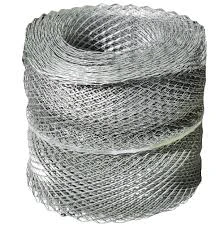-
+86 15030157877
-
sales@galvanizedmetalmesh.com
Dec . 25, 2024 18:30 Back to list
A Comprehensive Guide to Steel Bridge Gratings and Their Applications in Construction
The Importance of Steel Bridge Grating in Modern Infrastructure
Steel bridge grating is an essential component in the construction and maintenance of various types of bridges around the world. As urbanization continues to accelerate and infrastructure demands increase, the role of steel grating becomes even more critical. This article explores the significance of steel bridge grating, its applications, advantages, and the importance of selecting the right type for specific projects.
What is Steel Bridge Grating?
Steel bridge grating refers to a framework of bars, typically made of steel, which is used as flooring and decking on bridges. It is designed to support heavy loads while allowing for drainage and minimizing weight. The construction of these gratings often involves a series of welded or bolted connections between flat bars, forming a grid-like structure.
Applications in Bridge Construction
Steel bridge grating serves a myriad of purposes. One of its primary applications is in vehicular bridges, where it provides a sturdy surface for the passage of vehicles and pedestrians. Its use is not limited to new constructions; it is also employed in the restoration and retrofitting of older bridges to enhance safety and longevity. Additionally, steel grating is often utilized in drainage systems to prevent debris accumulation while allowing water to pass through efficiently.
In pedestrian bridges and walkways, steel grating provides excellent slip resistance due to its textured surface, enhancing safety for foot traffic. Furthermore, its lightweight nature compared to solid steel plates allows for easier installation and reduced load on the supporting structures.
Advantages of Steel Grating
One of the most significant benefits of using steel in bridge grating is its strength-to-weight ratio. Steel is an incredibly durable material, capable of withstanding heavy loads and adverse environmental conditions. This durability translates to a longer lifespan for bridges, reducing maintenance needs and costs over time.
steel bridge grating

Steel bridge grating is also advantageous in terms of safety. The open-grid design allows for optimal visibility and drainage, reducing the risk of water pooling on the surface that can lead to accidents. Moreover, the structure’s inherent slip resistance adds an extra layer of safety for both vehicles and pedestrians.
Another critical factor to consider is the environmental aspect. Steel is easily recyclable, making steel bridge grating an environmentally friendly choice. In a world increasingly focused on sustainability, using materials that can be repurposed contributes to a greener future.
Choosing the Right Steel Grating
Selecting the appropriate type of steel grating is crucial for ensuring the longevity and performance of bridges. Several factors must be considered, including the type of traffic the bridge will handle, environmental conditions (such as weather and exposure to corrosive substances), and maintenance requirements.
Common types of steel grating include welded, pressed, and swaged, each with its own set of characteristics. Welded grating is favored for its strength and structural integrity, while pressed grating offers a smooth surface ideal for pedestrian areas. Swaged grating, on the other hand, is lightweight and can provide a unique aesthetic appeal.
Furthermore, coatings such as galvanized or powder-coated finishes can enhance corrosion resistance and prolong the life of the grating, making it imperative to select the right treatment based on the project requirements.
Conclusion
In conclusion, steel bridge grating plays a vital role in the realm of infrastructure. Its applications, advantages, and versatility make it indispensable in ensuring the safety and functionality of bridges. As infrastructure continues to evolve in response to growing urban demands, the importance of steel bridge grating will only increase. Hence, engineers and planners must prioritize selecting the right type of grating to meet specific project needs, thereby contributing to safer and more sustainable infrastructure solutions.
-
Welded Gabion Solutions: Durable & AI-Enhanced Designs
NewsAug.01,2025
-
Premium Welded Gabion Mesh | Robust & Eco-Friendly
NewsJul.31,2025
-
Premium Eco-Friendly Roof Tiles | Affordable & Durable
NewsJul.31,2025
-
Premium Roof Tiles for Durable & Stylish Roofing Solutions
NewsJul.30,2025
-
High-Quality Roof Tiles for Durable & Stylish Roofing Solutions
NewsJul.29,2025
-
High Quality Square Wire Mesh Manufacturer & Supplier for Wholesale
NewsJul.29,2025



